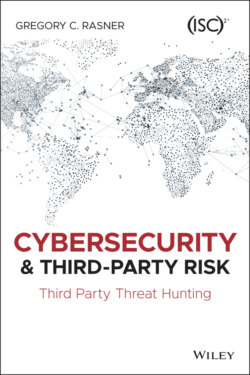Читать книгу Cybersecurity and Third-Party Risk - Gregory C. Rasner - Страница 11
The VGCA Supply‐Chain Attack
ОглавлениеOn December 17, 2020, ESET Research announced it had detected a large supply‐chain attack against the digital signing authority of the government of Vietnam (ca.gov.vn), the website for the Vietnam Government Certification Authority (VGCA), which is part of the Government Cipher Committee under the Ministry of Information and Communication. Vietnam has made the digital leap, and almost anyone in the country who requires a government service, product, or approval is required to use a digital signature. These e‐signatures have the same authority and enforceability as a traditional paper document autograph according to government decree.
The VGCA also develops and makes available for download a toolkit to automate the process of e‐signatures. This toolkit is widely used by the government, private companies, and individuals. VGCA's website was hacked as early as July 23rd, and no later than August 16, 2020. The compromised toolkits contained malware known as PhantomNet, and SManager ESET confirms that the files were downloaded from the VGCA website directly, and not the result of a redirect from another location. While these infected files were not signed with proper digital certificates, it appears that prior files were not correctly signed either. This may have led to users not rejecting the improper digital certificates of the trojan‐infected files because they behaved the same before the malware was added.
When an infected file was downloaded and run, the correct VGCA program ran along with the malware. This masqueraded the trojan to the end user because they saw the normal program running correctly, being unaware of the trojan or unlikely to look for it because the program appeared to be running normally. The file eToken.exe extracted a Windows cabinet file (.cab), which was used as an archive file to support compression and maintain archive integrity. The file 7z.cab was the file that contained a backdoor for the attackers to exploit. The attackers went to great lengths to ensure that the backdoor ran, regardless of the user's privileges on the device.
If the 7z.cab file was able to run as an administrator on the machine, the program wrote the backdoor to c:\Windows\appatch\netapi32.dll, which then registered it as a service to ensure it kept running after any reboot. On a device that only allowed the file to run as a normal user, the install placed it in a temporary directory, but the program scheduled a task to ensure its persistence. ESET named this backdoor PhantomNet. They mentioned that the victim list included the Philippines, but no evidence was found of a delivery mechanism.
The trojan was determined to be a simple program, and according to the sophistication of the attack, it is likely there were other more malicious plugins added to exploit the backdoor. When the victim's web configuration was determined, then it reached out to a command and control (C&C) server to get instructions. Communications with the C&C servers was done over HTTPS (secure, encrypted web traffic), and the attackers went to the trouble of preventing the interception of traffic (i.e., man‐in‐the‐middle attack on their own data) by using their own certificates.
Data analysis indicates that the malware was used for lateral movement. Once inside the computer, it enabled the attacker to move around the network for other data. The malware collected and transferred information about the computer, user accounts, and victim. In the post‐attack forensics, no data was discovered nor was the goal of the attack.
ESET wrote on its website:
Conclusion: With the compromise of Able Desktop, the attack on WIZVERA VeraPort by Lazarus and the recent supply‐chain attack on SolarWinds Orion, we see that supply‐chain attacks are a quite common compromise vector for cyberespionage groups. In this specific case, they compromised the website of a Vietnamese certificate authority, in which users are likely to have a high level of trust. Supply‐chain attacks are typically hard to find, as the malicious code is generally hidden among a lot of legitimate code, making its discovery significantly more difficult.
